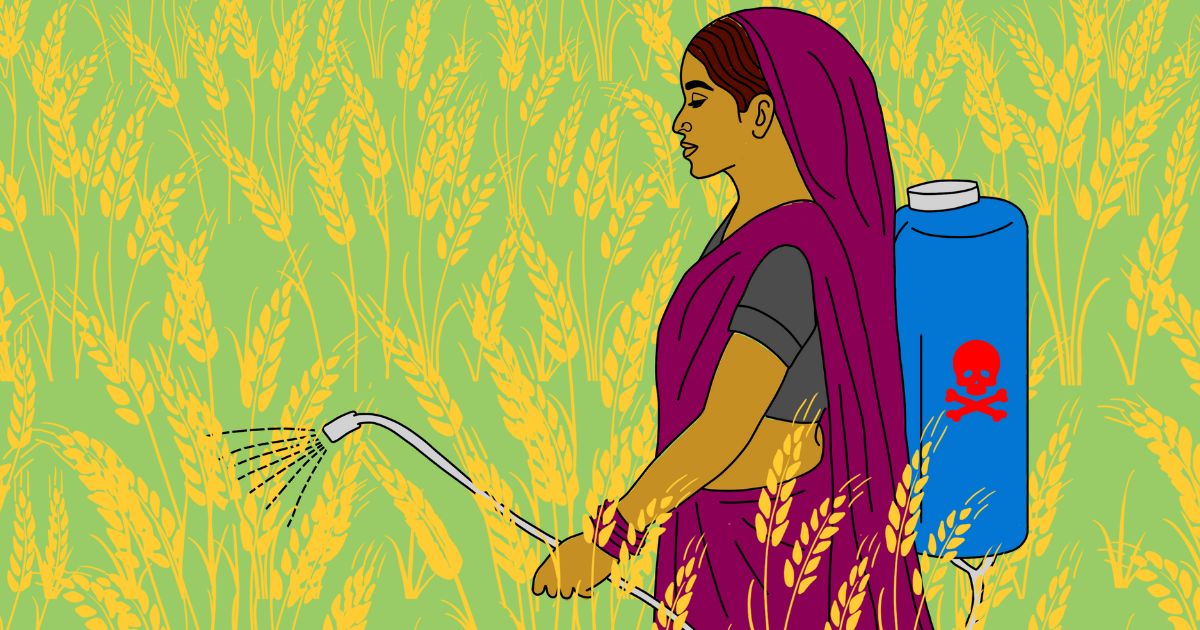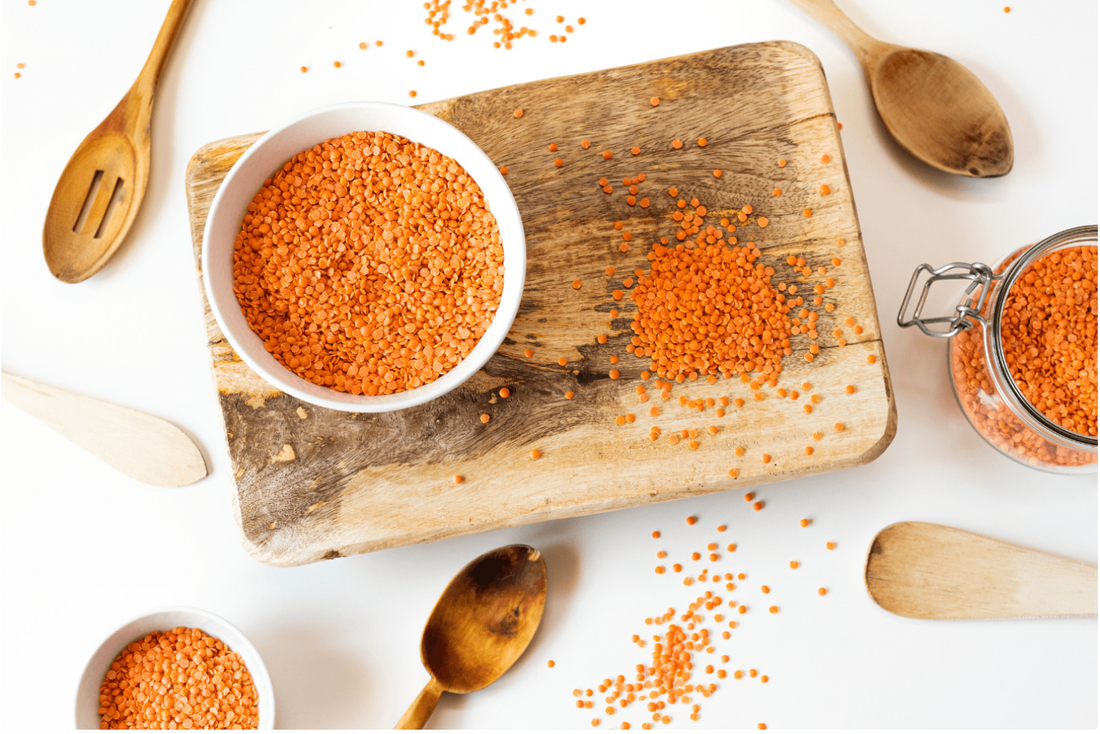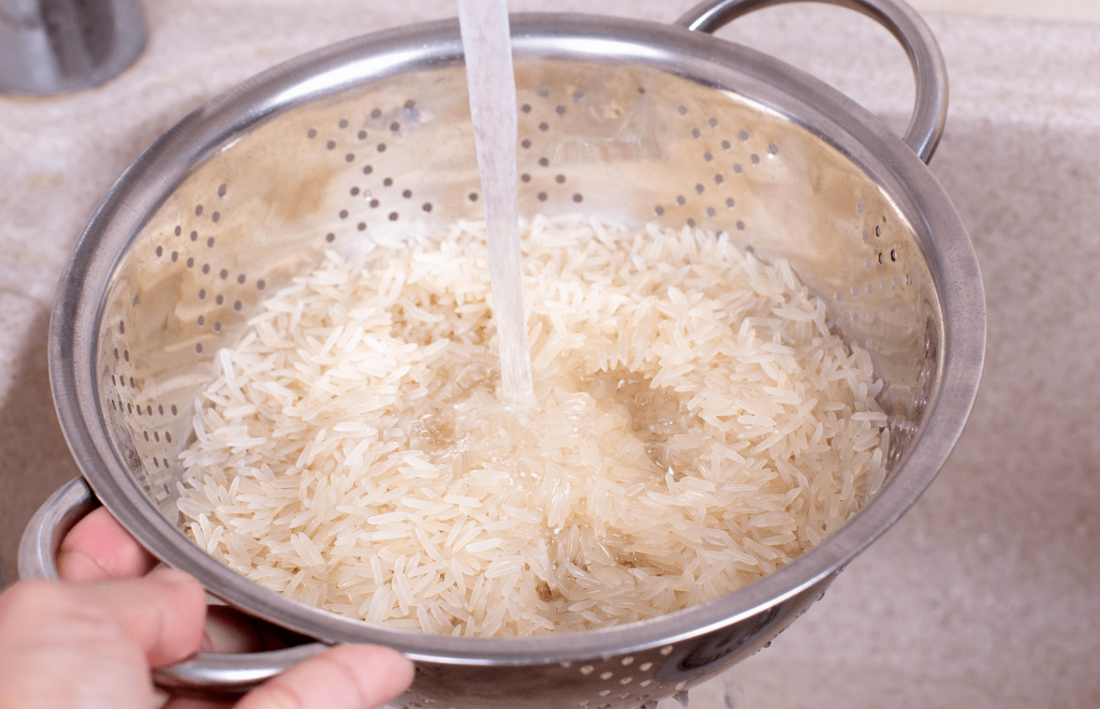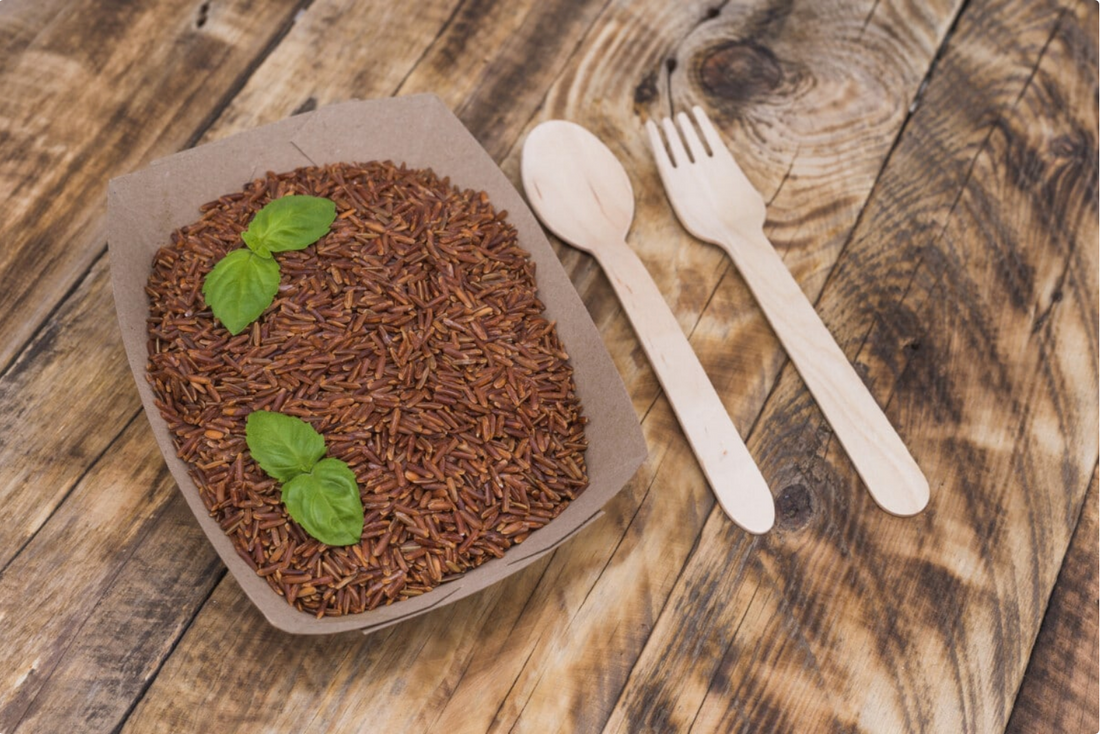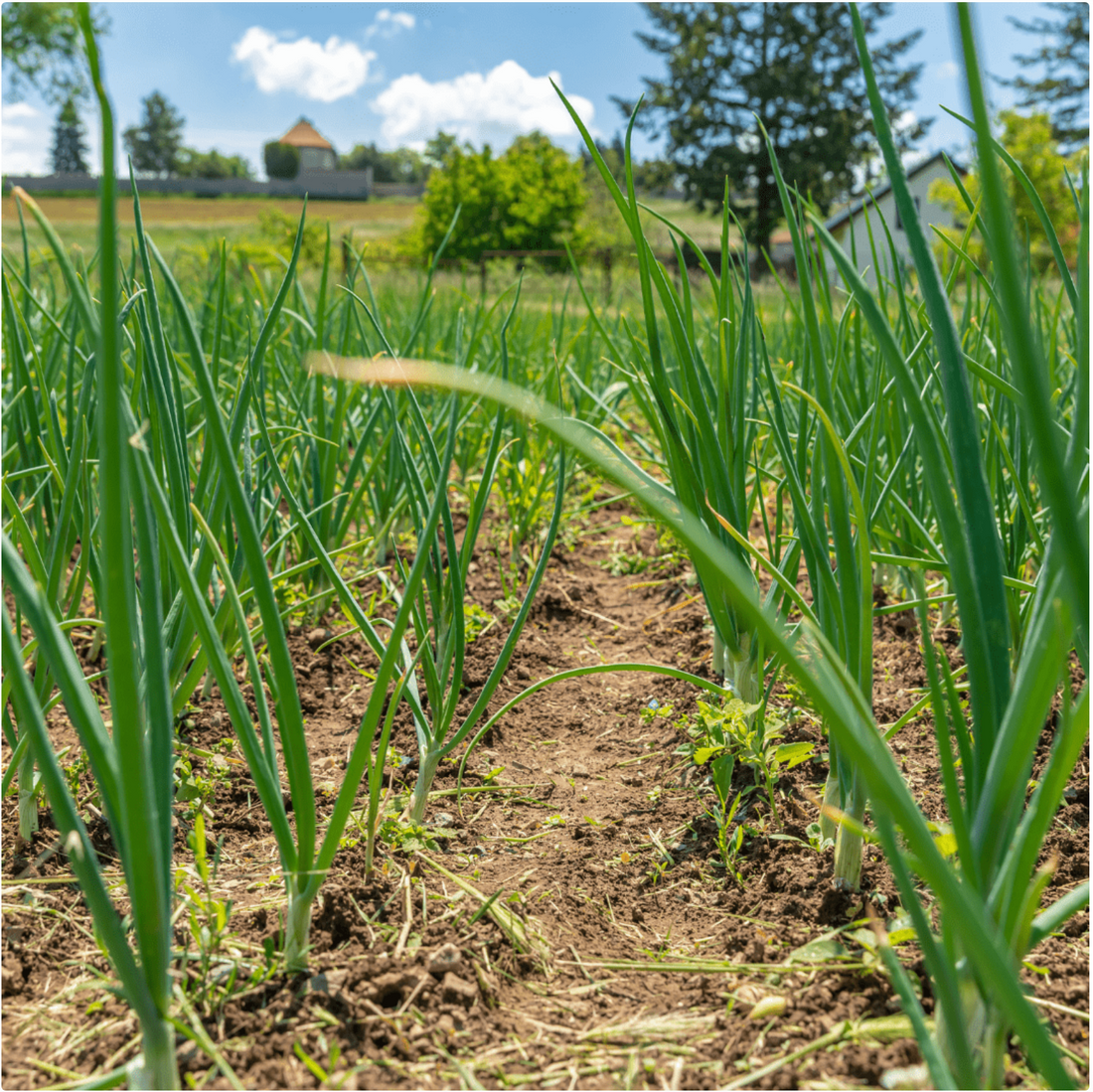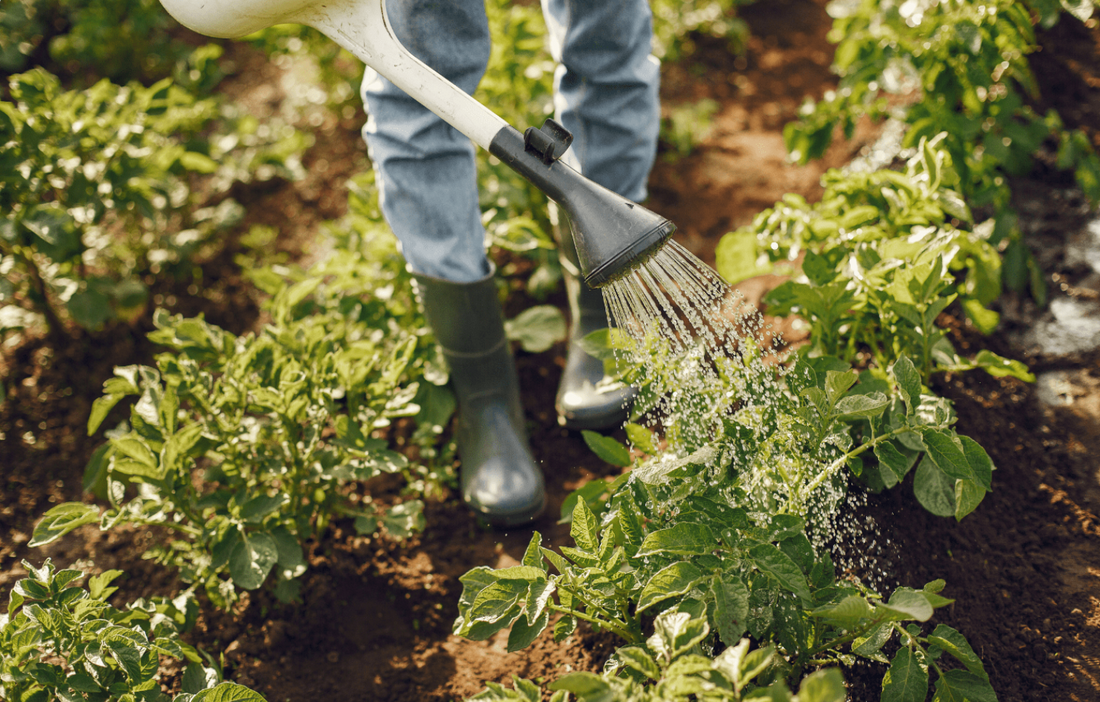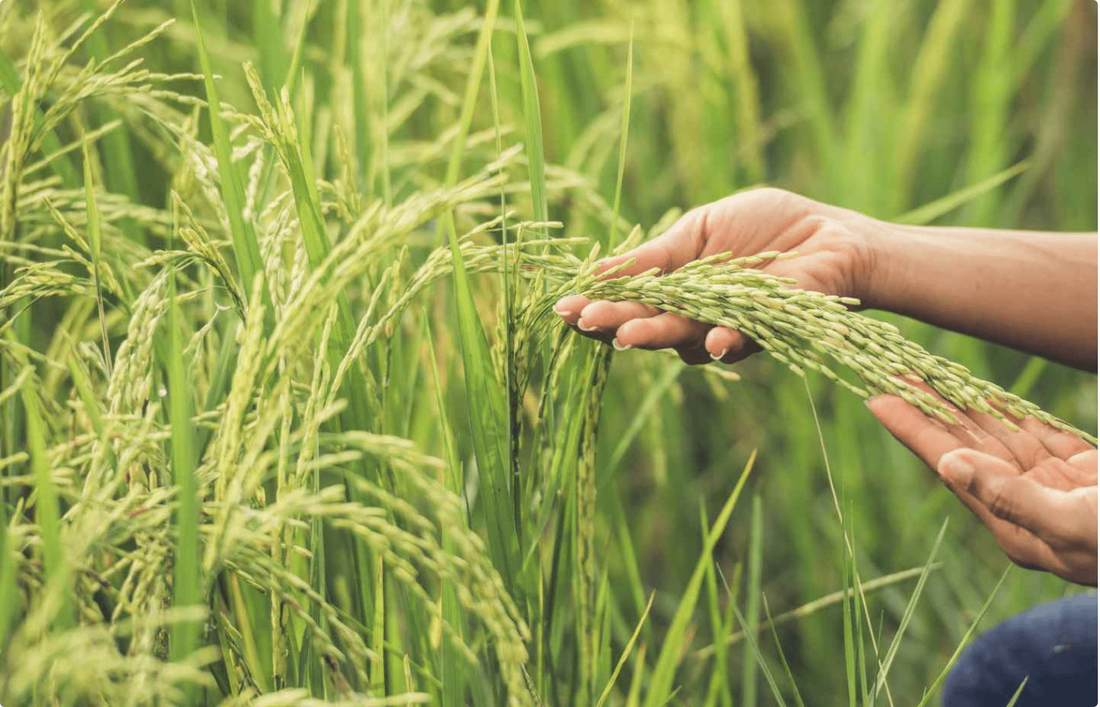Articles
Consuming Pesticide-Free Pulses Helps Reduce The Carbon Footprint Created. Here Is How.
Pesticides have been widely used to control the growth of weeds and prevent crop damage by insects, rodents, and mold. Post-harvest additives are used to enhance shelf life and prevent spoilage. Most of the time, a small amount of pesticide- residue remains in food grains which can be alarming and since linked to a range of diseases and disorders. Pesticides also contaminate the soil, and turf; toxic to a host of other organisms including birds, fish, beneficial insects, and non-target plants. Alternative methods in organic farming like integrated pest management (IPM), crop rotation, or organic farming help retain the goodness of grains and pulses as well as safeguard the environment. Let us specifically talk about organic and pesticide-free pulses today. Why is consuming organic pulses a smart choice for you and the environment? Pulses are high in soluble fiber that helps reduce blood cholesterol levels and helps prevent constipation. Pulses are particularly high in the B vitamin folate and regular consumption of pulses is said to reduce the risk of heart disease, diabetes, and certain types of cancer. This superfood is a versatile, and easy-to-prepare ingredient that can be used in any meal- be it entrees, salads, or bread too. Pulses are the easiest to grow and growing them promotes sustainable agriculture (crop rotation) and are resilient to climate change as well. Consuming organic pulses is a water-wise choice since most pulse crops are adapted to drier environments and well-suited to arid areas. Some pulses, like lentils and peas, can extract water from a shallower depth, thereby leaving more water in the ground for crops that follow. Legumes can be cultivated easily all year round and not just over the summer months. One of the important features of pulses is their nitrogen-fixing and soil-bound phosphorus fixing properties, which are closely associated with improving soil fertility. It can fix large amounts of nitrogen, up to 80 percent from the air through biological fixation in the nodules on the pulse crop roots. They promote higher rates of accumulation of soil carbon over cereals and grasses. Through crop rotation farmers can start integrating pulses into their production of basic cereals through rotations, intercropping, or as cover crops. Cultivating organic pulses also helps reduce the need for synthetic fertilizers and pesticides while still contributing to an increase in overall yield. Now this creates a more diverse environment at the field level, by supporting a broader range of insects and “wildlife” above ground and bacteria and fungi in the soil. This paves way for a more resilient “ecosystem” that helps keep harmful insects, diseases, and pathogens in check, automatically reducing the need to use synthetic pesticides. A sustainable diet with organically sourced pulses has the lowest environmental impact, with low GHG emissions (this is related to the cultivation of crops using nitrogen fertilizers). Now, this also supports local farmers and communities. Consuming organic pulses does a world of good while being easy on the pocket, and reducing the carbon footprint created as well. Can anything get better than this?
Learn moreFood Safety – A Non-Negotiable Right
Up until a few decades ago, food choices were quite limited. You could count the total brands in the market on your fingertips, and the high price sensitivity amongst consumers meant that decision about which product to buy was very dependent on the price. As time has gone by, the world has realized that there are large and significant side effects to not being mindful about the food on our plates. From obesity and malnutrition to cancer, a lot of the worlds’ health problems are a result of the food we consume. Today, we find many more people in supermarkets, studying the ingredients labels, doing quick google searches to find out if ingredients are gluten free or not and going out of their way to find brands and companies that suit their needs and fit into their idea of safe food. To bring even more awareness and promote this growing trend further, the WHO has marked the 7th July to be the World Food Safety Day. On this occasion, we are trying to draw attention and inspire action to help prevent, detect and manage foodborne risks, contributing to food security, human health, economic prosperity, agriculture, market access, tourism and sustainable development. WHO has listed the following six calls to action, and we are proud to share that Safe Harvest currently follows and works towards promoting all of the points mentioned. Here is how: Grow it safe – Agriculture and food producers need to adopt good practices While the green revolution brought with it the assurance of food safety, it also introduced Indian agriculture to chemical pesticides in farming. With lack of information and misleading instructions from pesticide traders, Indian farmers spray much larger amounts of chemical pesticides on their crops than recommended. This leads to several of our food products having residues much higher than the permissible limits. Ranging from cancer to harm on reproductive health, the long term effects of consuming pesticide ridden foods is a list that keeps increasing. Farmer welfare is an integral part of our mission at Safe Harvest. While we help increase their incomes through providing stronger market linkages, we help them reduce health hazards at their farms by encouraging them to shift to natural pesticides instead of chemicals. All of the 1,00,000 small farmers that are associated with us today, practice NPM (Non Pesticide Management) farming methods on their field which involves making their own natural pesticides using neem, compost, cow urine etc. We conduct timely training sessions with the farmers and update them about the NPM methods, all to ensure that only the safest food reaches your plates. Ensure it’s safe – Government must ensure safe and nutritious food for all In random tests done across metropolitan cities in India, it was found that most food – including a few brands that claim to be 100% organic, have pesticide residues in them. Read it here. At Safe Harvest, we guarantee you products with zero pesticide residues. We ensure this by collecting samples of our farmers’ produce before procuring them and sending them for testing against the MRL limits at FSSAI accredited laboratories. Our products are currently tested for MRLs against Jaivik Bharat standards issued by the Govt. of India which list out 127 pesticides along with their permissible residue limits. This method helps us ensure that every lot of produce that is reaching our final consumers is absolutely and entirely free from any pesticides. Keep it safe – Business operators must make sure food is safe For a business that advocates disuse of synthetic chemicals while growing food crops, it is only fair that we adhere to safe and natural means for our storage. The Food Safety and Standards Authority of India requires business operators to ensure to maintain food safety standards in aspects of Procurement of grains from Mandi Transportation of the grains Grain Storage and Handling Blending/Quality Verification Processing Packaging and Labelling Storage/Handling of finished product While majority of the safety standards are true for conventional, organic and pesticide free food, we ensure special care in activities that make food vulnerable to chemical contact. Activities like establishment management and sanitation which requires uses of chemicals for disinfestation, allergen control, warehouse cleaning and hygiene and pest control are specially monitored and carried out under completely bio-friendly techniques. Some pest-management activities like fumigation are avoided altogether. Our implementation ISO 22000, which has been deemed crucial by FSSAI for any food business identifies weakness in the production line and sets critical limits for preventive and corrective measures by incorporating the widely used and proven Hazard Analysis Critical Control Point (HACCP) principles. With ISO 22000, not only have we set a goal to ensure not just minimization, we’ve been progressing towards complete elimination of associated hazards during production, which are Elimination of physicals hazards such as straw, gum, human/animal hair, stalk, feces etc. Elimination of biological risks like microorganisms and pest by application of cocoon storage. Elimination of chemical hazards coming from the field level like pesticide residues and at the processing level. Keeping in line with our Non Pesticide Management principles, we refrain from any sort of chemical pest control activities like fumigation and common disinfestation methods. Eat it safe: All consumers have a right to safe, healthy and nutritious food Depending on the market availability and living standards, consumers opt for different categories of food viz. conventional, organic or pesticide free. Regardless of their choice, they have a right to safe, healthy and nutritious food. Owing to the growing demand of food production, farmers in India use a wide range of fertilizers and pesticides. As a result, the traces of agro-chemicals used to grow food crops are often found in our food which eventually make their way into the food chain. Consumption of these toxic chemicals over the years even though in small amounts, accumulate in our body and give rise serious health implications. Contamination can happen not just from the crop fields, but also from storage areas, pest control operations and transportation. Also, India’s food supply largely depends on small farmers. These farmers are often owners of not more than 5 acres of land who make little to no profit most of the time. To make profits, they ignore food safety means like contamination or prevention of infestation. They also lack facilities to maintain hygiene and handling, transportation standards. Lack of appropriate training and education is at the root of this. At Safe harvest, we are constantly on the lookout for small and marginal farmers who we handhold for safe agricultural practices like use of bio-pesticides, use of bio-fertilizers such as compost, non-chemical seed treatment, watershed management etc. In addition to cultivation, our farmers are also trained for pre-procurement appropriate storage measures. To maximize their profits, we buy produce from these farmers at the market rate or higher at their own farm gates. Samples of the produce before buying is first tested in laboratories accredited by FSSAI. The Food Safety and Standards for Organic food requires all food articles to be tested for 127 chemical residues. Having tested for all requisite parameters grants us the certification that our food is safe for consumption with all nutritional values intact. All of our test reports are available for consumers to refer to on request. Team up for safety – Food Safety is a shared responsibility Food safety is a non-negotiable interest for both the food industry and the customers. Because of its extensive scientific and technical resources and experience with these issues, the food industry can make important contributions towards their understanding and resolution. With more technological advances, media for dissemination of information about food safety and selection have become abundant. This grants us immense responsibilities as food producers to make sure customers receive correct and timely information of what they consume. Ensuring selection of appropriate media like social media for urban dwellers and television and radio for rural dwellers to communicate is extremely important. Customers should have access to information about every process involved in the manufacturing of their food, including the processing facilities, origin of their food, nutrition content, how to prepare, storage methods etc. Labelling is an extremely important way of letting people make informed decisions. Food regulatory bodies should levy stringent standards on the quality of food being marketed. Limits for pathogenic microorganisms, allergens, genetically modified foods, contaminants (including pesticides) should be set and made uniform across all categories of food. Consumers’ initiative to communicate to the manufacturers, to ask questions about products as a result of information they have seen in advertising or labelling or because of their experience in using the item is highly effective in improving food quality. More often than not, consumers’ reactions are solicited by manufacturers in their advertising. Consumers’ right to question demand information is an extremely powerful tool in improving food safety. Safe food is every individual’s right. Consumers have a right to expect that the foods they purchase and consume will be safe and of high quality. While consumers, governments and others play an important part in ensuring food safety and quality, in free-market societies the ultimate responsibility for investing the physical and managerial resources that are necessary for implementing appropriate controls lies with the food industry – the industry that continuously oversees the manufacture and processing of foods, from raw ingredients to finished product, day in and day out. As a responsible food producer, we make sure every one of these points is checked so consumers eat what they pay for.
Learn moreFarm-To-Fork: Unlocking Our Supply Chain To Deliver Safe And Fresh Food
“Health is the greatest of human blessings”- Hippocrates. We are all that we eat and the quality of food we consume influences our physical, mental, and even emotional well-being. Eating fresh locally grown produce, sourced from farmers and suppliers within the community provides a host of benefits to the consumer and the ecosystem. Sourcing safe produce also means a keen focus on the quality of soil and sustainable farming practices typically translating to better tasting, more nutritious produce. Several benefits come from eating local food, including environmental, economic, social, and health benefits. Here are a few, other than the obvious- freshness quotient and nutritive value. Discovering local produce can help unearth food history and agricultural practices in the region. Here is your opportunity to also introduce new tastes to your palette! Buying local fresh produce benefits the environment, as it significantly brings down pollution and added carbon footprint caused due to packaging Eating local supports the regional economy as the money you use to purchase items is likely to continue to circulate within the local economy It is convenient, more than anything. There are multiple food sourcing solutions, in today’s era suppliers of farm-fresh produce in every locality. More than anything, it is easy on your pocket! Packaging and distributing farm-fresh produce : But of course, one cannot go around on a day-to-day basis, scouring for ingredients to make healthy daily meals. Reliable food businesses are under a legal obligation to ensure that farm produce sources are safe and secure. They are responsible for the produce, transport, storage and ultimately delivering value to their consumers. Even the slightest hint of negligence and unhygienic practices can leave fresh produce vulnerable to contamination or reduction in the food’s nutrition value. It is also essential to hold farmers accountable for high residue food, quality issues, and bad agricultural practices. In some cases, components of packaging materials migrate from the package to foods, leaving trace residuals in the produce. The distribution and supply of fresh fruits and vegetables in our country can be complex. To streamline food safety measures and awareness among active players is essential. A robust technology-driven distribution channel will ensure food safety until the last-mile delivery. Embracing technological solutions accurately predict consumer demand, thus managing supply and demand functions to handle inventory better and reduce quality issues. The Produce Safety rule establishes science-based minimum standards for the safe growing, harvesting, packing, and holding of fruits and vegetables grown for human consumption. The rule is part of the agency’s ongoing efforts to implement the FDA Food Safety Modernization Act of 2016. How does Safe Harvest ensure genuine and fresh products are sourced and distributed? Safe yet fresh produce does not have to be expensive or inaccessible. Safe Harvest was established to exactly prove this since avoiding chemical/pesticide-laden food products is no more a lifestyle choice. It can be affordable and be made available to anyone across any economic strata. While the Green Revolution brought in high-yielding, modified crops, and it used chemical-driven agricultural practices. Conventional and clean techniques took a beating, synthetic inputs affected the average farmer and also led to health issues, due to constant exposure to harmful chemicals. The farms to kitchen concept by Safe Harvest sources produce directly from small farmers through Farmer Producer Organizations that promote Non-Pesticide Management (NPM) and safe practices. This produce goes through the process of testing, cleaning, and storing to ensure that these products come in contact with zero chemicals at any point throughout their journey to a kitchen. How does our food sourcing solution work? A select set of small farms are chosen from across 10 states in the country. Crops are grown here with a stringent system of Non-Pesticide Management (NPM) methods, no synthetic pesticides, or GM seeds are used. Coordinate with FPOs who aggregate produce from individual farms at their collection centers Harvest produce is tested time and again for any residue of chemicals, before and after minimal processing. Finding even a small trace of any ensures that the whole lot is rejected Produce that clear chemical tests are directly collected and readied for sale At Safe Harvest facilities, the produce undergoes minimal processing like grading, de-husking, and grinding in pesticide-free mills Cold and Cocoon storage tactics are followed to ensure the product retains freshness and nutritive value for a longer duration One more round of machine cleaning is carried out before packaging and sending to retail points Farm fresh produce can be made available in homes effortlessly, with players such as Safe Harvest at the helm of affairs, reliability also ceases to exist.
Learn moreWhy Farmer-Friendly Products Matter And How They Can Protect The Planet
Farmers have had the respect of people ever since the existence of a civilized society. But mere respect is not enough, in the era of commercialization, just as we ensure that the farmers get the right prices, there are a few more aspects that we need to care of, which are often overlooked. Sustainable agriculture is the gateway to a better tomorrow and a better planet. Our responsibility as consumers lies in making choices that support sustainable farming and thus, help a farmer protect the soil and water that yield his livelihood. What are farmer-friendly products? Farmer friendly products refer to those products derived through sustainable farming practices. These products are friendly to the farmer and the ecosystem around agriculture due to their nature of interconnectedness. The soil, watersheds, irrigation system, natural habitats, rural communities and the environment are all interconnected and dependent on agriculture to retain their quality and natural existence. These also have a bearing on the economy and ecology. Why do farmer-friendly products matter? Over the decades, in the name of advancements, agriculturists have diverted from natural and sustainable ways of farming and resorted to unsustainable methods of farming from the perspective of both the economy and the ecology of it. This has not only put the farmer in crisis but also the environment and related industries. Fertile lands are not just lands for pasture and agriculture, but also home to several species of flora and fauna. These can be preserved only when agriculture is done keeping in mind the natural ecosystem around the place and not merely what crops to grow. The aim is to strike the balance between taking from nature, giving back to it, all while keeping the basics intact. How can this protect the planet? Let’s talk about the different elements of nature to understand how sustainable practices can protect the planet 1. The soil – Organic manure, crop rotation, cover crops and inter-cropping are just some of the many practices that can keep the soil in good health. This is required to keep the cycle of nutrition and energy going on in the soil. This also ensures that the incidence of soil erosion is minimized. Natural practices also help increase the soil biodiversity and the natural habitat of several species that live in the soil and within. These practices also support timely soil forming and conditioning. 2. Water- Water is crucial for all species and living communities on the planet. Synthesized chemicals and pesticides inflict harm and pollute the groundwater. This affects the waterbeds and can be hazardous for those who consume this water. On the contrary, sustainable agricultural practices are aimed at restoring groundwater by implementing rainwater harvesting and water recycling to keep pollutants at bay. 3. Biodiversity – Sustainable farming practitioners are the custodians of biodiversity in the region. With the use of chemical pesticides, there is a lot of harm that is inflicted to the natural flora and fauna in the soil and in the region. On the other hand, sustainable practices recommend the balance and restoration of the biodiversity in the area. 4. Seasonal food – Organic and sustainable methods use no artificial methods of ripening or harvesting and only believe in growing the seasonal crops. This preserves the ecological balance and also regulates the commercialization of those food items that have great demand in faraway lands that result in long transportation roots leading to the carbon footprint. 5. Renewable energy – Sustainable farming incorporates the use of alternative sources of energy. Most farms use solar energy by installing solar panels and hydro energy, where they have the resources for it. As farms need a lot of energy for irrigation purposes, they produce enough energy to manage irrigation and still have more for other purposes. In principle, sustainable practices and organic farming promote a healthy lifestyle that includes eating food fresh based on seasons, climate and weather. Research has shown that people who consume organic food also tend to have a natural gravitation towards healthy practices and lifestyles. What can we do to protect the planet? The choices range from simple actions to complex processes, so many of which we can and can’t control. The things we can control, like what we eat and shop, are significant enough to make a difference to the planet. The choices we make today can also be passed on to the imminent generations and to a larger community of people. Explore our website to make better choices for a better tomorrow and the planet.
Learn moreWhat is a Pesticide and why is it bad for your lifestyle?
What is a Pesticide and why is it bad for your lifestyle? Pesticides are being used in agriculture for several decades and enough has been said about how bad they are for the health of people and the planet. Before we take another step towards it, let us understand what a pesticide is and why it is bad for us. What is a pesticide? A pesticide is a chemical substance that is meant to control or eliminate pests while growing crops. Pesticides can be for both preventing and destroying pests, weeds, insects and fungi infecting the crops. When we say pesticides, it includes fungicides, insecticides, biopesticides, rodenticide, animal repellent, pesticide and several more. The pesticide industry was INR 232 billion in 2020 in India and is also a growing market worldwide. Before we understand the adversities of pesticides on the consumers, let us understand how pesticide exposure affects the rural community. Effects of pesticides on the rural community Chemical and synthetic pesticides are toxic in nature to anybody in contact, moreover to the ones who are exposed for long time frames. This is not merely short-term adversity, but is extremely harmful in the longer run as these chemicals and toxins start accumulating in the soil and go as deep as the water and irrigation sources. Even though one may not come in close contact with these pesticides directly, the contamination of the soil and water are disastrous enough. It affects the skin, health, digestive and respiratory systems and leaves traces for generations. There is a risk of inhalation, no matter how cautious is as they leave residues and traces. This can cause acute and chronic damage to the entire rural community and not just the ones directly involved, as with time, this also causes air contamination and pollution. What are the long-term effects of using pesticides for consumers? The long-term effect of pesticides can be seen on children in their physical and mental growth. Infants and kids, whose organs are still in the development phase, accumulate pesticides at a growing age, bearing a direct effect on their organs. Their nervous system can also be immensely affected by these chemicals, affecting their dexterity, growth and mental ability. For a family consuming pesticide on a regular basis might notice the ill effects after some time in gastrointestinal system and respiratory system, although it can be hard to trace the health issues back to these chemical substances. Chronic conditions and cancer are often attributed to food that is processed and filled with chemical pesticides. What can be done to reverse this damage? Action can be taken at various levels and the most important of all are the actions that we can take at home by making small changes in our life. One of them, as consumers, is the usage of natural food and spreading awareness of the same. When we buy and consume natural food, we vote for sustainable farming practices and a sustainable tomorrow. These sustainable farming practices aim at rejuvenating the soil and staying as close to nature as possible while we yield the goodness of the greens. As a consumer, buying from local farmers, whose stories and lands are known will support their wellbeing and right practices. Switch to pesticide-free natural food and vote for the good health of your family and environment. Explore Safe Harvest to know more…
Learn moreWhat Are The Benefits Of Eating Locally Grown Foods?
You can count its warts or cast a halo on it, but it’s an undeniable fact that food and nutrition are uncompromised aspects of health. Eating locally grown, seasonal food can make a visible difference to one’s health and has multi-faceted benefits. Choice of eating local food is not merely a choice of food but a choice of lifestyle and we all took that new year resolution of taking care of our health, didn’t we? When food is sourced from far and distant places, not only the element of uncertainty as to who grew it and how it was grown is there, but it also makes the exposure to preservatives and pesticides inevitable. According to a study, over 60% of conventional produce has residual pesticides even after thorough washing, leading to contamination. As consumers, when we buy local food, both information and good food become accessible. The information as to who grew it? if it was grown pesticide-free or not? the freshness of the harvests? Answers to these questions can become key parameters for the prior- consumption decision. Here are some of the benefits of locally grown foods: 1. Healthy : The most obvious benefit of all is the health of the family. Locally grown food tends to be fresh and seasonal in nature. This ensures that nutrition is delivered just right when cooked. When food comes from faraway places, a lot of nutrition is lost because of time in transit and because of the preservatives used. 2. Environment friendly : Sourcing food from farms directly, creates a very safe food supply chain, making it less taxing on the environment. It takes a toll on the environment to transport tonnes of food on an everyday basis. Greenhouse emissions and your carbon footprint can be significantly reduced if the food doesn’t have to travel far to get to your plate. 3. Economical : Due to decreased middlemen, storage costs and shipping, locally grown food is lesser in cost for both retailers and end consumers. This also supports the local community of farmers. 4. Seasonal : Locally grown food also means that you are getting to consume only what’s seasonal. This is a very healthy choice as stored food and food from distant lands pose risk for health. Seasonal food is also very good for health as produced during different times of the year it tastes better and has the highest amount of nutrients and antioxidants. 5.Knowing the farms and farmers : With the increasing carbon footprint and health hazards, people are conscious about where their food comes from and also teaching the same to their kids. By interacting with farmers, you can understand the crop conditions, growing and harvest processes and be part of a conscious consumer community. Locally grown food is always filled with flavor, nutrition and good health. It is not only important to be making conscious healthy choices but also to impart this wisdom to the generations coming ahead. This can help us create a future where farmers get fair prices and do not make losses because of wastages or unfair pricing. This is a small step, but an extremely important one towards the larger goal of creating a sustainable future and these small steps can make a huge difference.
Learn moreWhat Is The Difference Between Regular Honey & Forest Honey? Why Should You Choose The Latter?
Did you know, honey is a superfood packed with all substances vital for sustaining life? The wonderful sweetener includes enzymes, vitamins, minerals, and water; and is also the only food containing “pinocembrin”, an antioxidant associated with improved brain functioning. Isn’t that amazing?. What is regular honey? Of course, all honey starts as raw honey, but the product that ends up on shelf depends on what it goes through after the harvest. Production of regular honey involves several steps before it is bottled; such as pasteurization and filtration to enhance its shelf life and texture. Pasteurization destroys the yeast found in honey and also takes away natural antioxidants present in it. Ultra-filtration refines it further to make it transparent and smooth, removing other beneficial nutrients like pollen, enzymes, and antioxidants. Due to the large-scale commercialization process, regular honey often has additives, sugars, and artificial sweeteners such as high-fructose corn syrup or brown rice syrup. The chances of regular honey being pesticide-free and organic are also rather less. Is forest honey a healthier option over regular honey? Organic wild forest honey is the honeydew gathered by bees from wild forest trees such as holm oak and cork oak trees. Bees also collect it from rare herbs and wild flora found here. Wild forest honey has a sweeter fragrance when compared to the usual honey. Wild forest honey is full of vital vitamins such as C and B6 and minerals like magnesium, phosphorus, sodium, calcium, potassium, zinc, and iron. It is also high in nutritive elements such as sucrose and fructose. Organic forest honey is the perfect alternative to regular honey as instead of added preservatives that are present in processed honey, raw forest honey is full of naturally occurring enzymes, antioxidants, and minerals. Loaded with therapeutic benefits, the potent wild forest honey has several medicinal benefits ranging from treating respiratory ailments to heart diseases. Further benefits of forest honey are- Pure Forest honey lowers the bad cholesterol (LDL) in the body and raises the levels of good cholesterol (HDL). Hence, wild forest honey can lower the risk of heart diseases. It has phytonutrients with antioxidant, antibacterial, and antifungal properties that act as protective agents of the body, thus helping in enhancing the immune system. Forest honey has proven benefits for lowering and even curing the symptoms of respiratory diseases and can reduce inflammation in the airways of the lungs. This honey has natural hydrogen peroxide present in it, a known antiseptic. This combined with its antifungal and antibacterial properties serves as an effective remedy for fighting infections. Wild Forest honey is an excellent sugar replacement, particularly if you attempt to maintain your weight since wild forest honey’s GI is well below sugar, ranging from 54 to 59, while the GI of other sugar forms is as high as 105. It is a natural remedy for dandruff, and also helps in controlling eczema. The direct application of raw wild forest honey on the face can reduce pimples, black patches, and dead skin cells due to its antibacterial and anti-fungal effects. In a nutshell- Regular processed honey is the by-product of mindless mass manufacturing whereas pure forest honey is the result of the joint effort of wild honey hunters and wild honey bees Forest honey is not pasteurized, is unadulterated, and has no added preservatives. All of its nutrients are intact. While regular honey is diamond-clear and golden in texture; raw forest honey has a thick and cloudy texture. It tastes less sweet and has a slightly salty taste. How do you differentiate between the two? Dissolve samples of both these types of honey in water. Processed honey would get dissolved in the water within a few seconds, and the wild forest honey, being a thick paste, does not get dissolved easily. Choosing to replace sugar with honey in your diet is a wise move. What can be more reassuring is that your choice is adequately justified. Drop a heart if you agree!
Learn moreLeading The Pesticide-Free Revolution – #SafeFood for a Healthier Life
The past few years have seen an increase in the consciousness of consumers about the safety of the food on their plates. Long gone are the days when a quick wash was believed to be enough to get rid of the chemicals that were used in the production of our food, today consumers demand food that was grown without chemical pesticides entirely. There have been innumerable studies that have broadcasted the harmful effects of pesticides – citing cancer, effects on reproductory health, immune and nervous systems as possible repercussions of consuming pesticide-ridden food. Safe Harvest was established out of the need to fulfil this demand for safer food in the market and provide pesticide-free farmers a market linkage. Our products are grown by small and marginal farmers from across 10 states in the country all of whom adhere to strict NPM (Non-Pesticide Management of Agriculture) protocols. From using bio pesticides on the fields to new storage methods during processing, it is ensured that products come in contact with zero chemicals throughout their journey from the farm to your kitchens. Safe Harvest’s products are also minimally processed and unpolished, which helps retain maximum amount of nutrients in the grain. Being the first brand in the country to be selling pesticide-free food in the safe food category meant that we had to pave the way for protocols and mechanisms for ourselves. Safe Harvest conducts Maximum Residue Limit (MRL) testing for all of its products. Before procurement is carried out from the farmers, a sample is taken from each lot of the produce and sent for testing at FSSAI accredited laboratories. These MRL tests tell us that our product is free from all of the 129 pesticides mentioned in Jaivik Bharat standards. Our stringent testing mechanisms and frequency is often our unique selling point to several of our customers who truly believe our model and carry immense faith in our brand and mission. Safe Harvest today works with 1,00,000 farmers, most of whom are small and marginal and belong to larger Farmer Producer Companies (FPOs). These FPOs help us monitor the farmers and their pesticide-free practices throughout the year. With the help of our fair weighing practices, remunerative prices and village-level procurements, our farmers have been able to see a 30% increase in their income after their partnerships with Safe Harvest. Today, our catalogue comprises of pesticide-free cereals, pulses, millets, flavorings and spices. Safe Harvest is able to sell its products across the country through e-commerce websites such as Big Basket, Grofers, Milk Basket, Amazon, Flipkart, Dunzo and many others. We also sell through our own website, at www.safeharvest.co.in. For our customers who prefer to buy in-store, we are available in hypermarkets such as Spencers, SPAR, More and in local standalone stores across Hyderabad, Bangalore, Chennai & Delhi NCR. Safe Harvest began with a mission: one, to provide farmers better market linkages so that they get a larger share of the rupee and the second, to make safe food accessible to all consumers in the retail market at a reasonable price. We hope that our story pushes you towards making healthier life choices for yourself and sustainable life choices for the nature and world around you. Join us on our safe food mission today! Want to talk to us? Write to us at info@safeharvest.co.in
Learn more